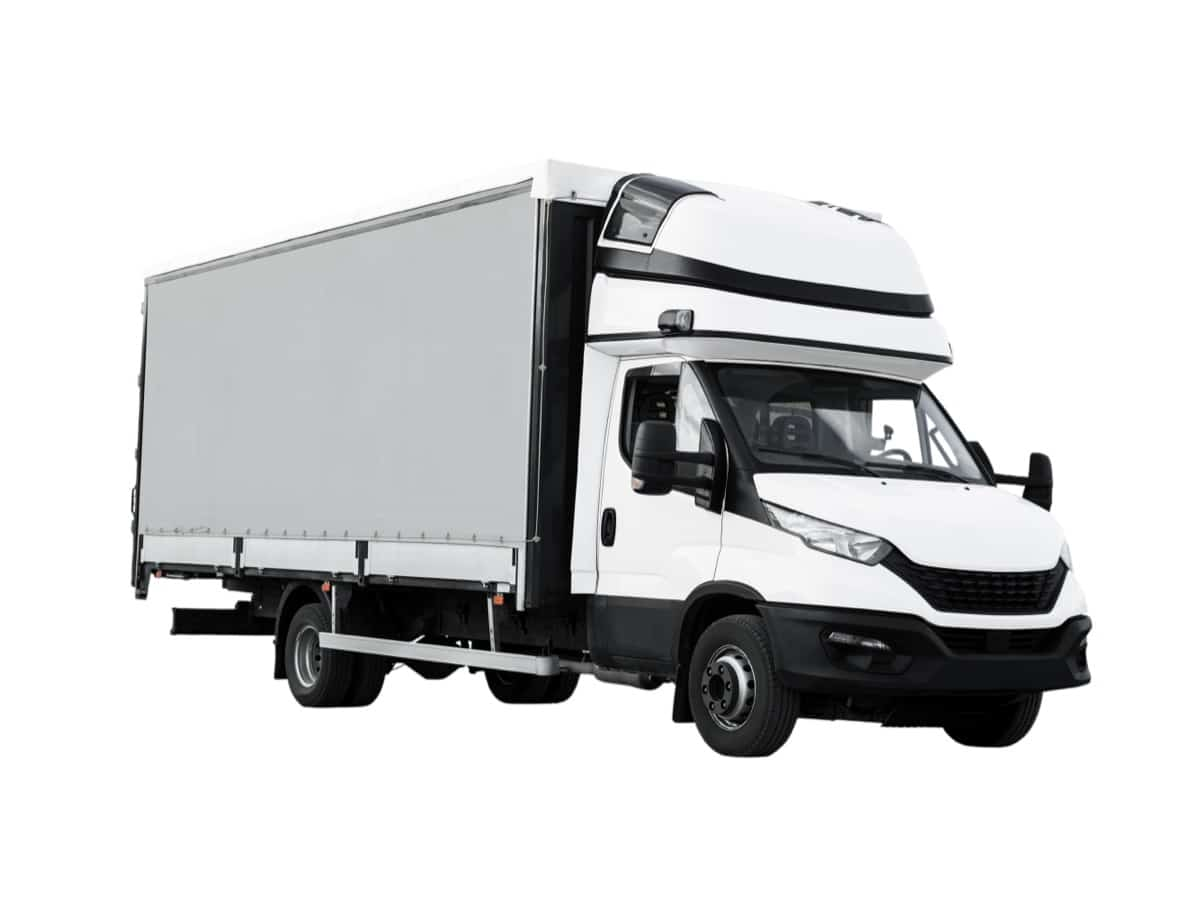The trucking industry is an indispensable part of global commerce. Aspiring entrepreneurs often question the truck transport business plan and the associated costs, profits, and required licenses. What is the profit of owning a trucking company? How much does it cost to start a trucking company?

What’s the potential truck income per month? The truck transport business profit can be enticing, with profit margins varying significantly. Diving deeper into the transport business profit margin can help elucidate the best trucking business to start. This article will demystify the trucking business plan license cost to start and profits, helping you make an informed decision.
Trucking Business Plan
Understanding the Licensing Requirements for a Trucking Business
One needs to understand the licensing requirements before diving into the truck transport business. Different regions have specific regulations. However, a business license and a unique operating authority (like a permit or a DOT number) are universally mandatory. These licenses ensure that the business operates within the confines of the law and maintains safety standards.
Steps to Obtain a Commercial Driver’s License (CDL) for Trucking Business
A Commercial Driver’s License (CDL) is a must to operate a truck. Acquiring a CDL involves several steps. Initially, one needs to meet the age and medical requirements. A written exam based on traffic laws, safety rules, and trucking specifics is conducted. Successful candidates then undergo a skills test, which includes vehicle inspection, basic control maneuvers, and an on-road driving test. Once passed, the CDL is issued, granting permission to drive commercial trucks.
Exploring the Costs Involved in Starting a Trucking Business
Starting a trucking company isn’t cheap. Initial expenses include acquiring the truck, ranging from $15,000 for a used vehicle to over $100,000 for a new one. Other upfront costs include insurance, which can be between $6,000 to $12,000 annually, and the previously mentioned licenses and permits. The nature of the trucking business you opt for also impacts costs. For instance, the startup expenses for a long-haul company might differ from a local delivery service.
In case you missed it: Tuck Shop Business Plan: License, Cost to Start, and Profits

Calculating the Initial Investment Required for a Trucking Business
In addition to the truck’s cost, initial investments cover office setup, software for operations, and marketing efforts. You’ll need space, even if it’s a home office, basic office equipment, and possibly dispatch software. Marketing expenses could involve a website, business cards, and online ads. Combining these costs, the initial investment for a small trucking business can range between $100,000 to $200,000. However, various factors, like the nature of the operations and the region, can influence this amount.
Analyzing the Operational Costs of Running a Trucking Business
Beyond the initial costs, running a trucking business has recurring expenses. Fuel, the most significant operational cost, can take up to 40% of the total expenses. Maintenance costs, including repairs and periodic servicing, can be 10% to 15% of the total expenditure. Driver salaries, tolls, and administrative expenses add to the mix. It’s crucial to understand these costs as they affect the transport business profit margin and determine the truck income per month.
Factors Affecting Profitability in the Trucking Industry
Various factors influence the trucking industry’s profit margin for an owner-operator. First, the niche or specialization plays a role. Some sectors, like refrigerated goods transport, may offer better profit margins. Operational efficiency is another major determinant. Efficient routes, vehicle maintenance, and good driver relations can optimize profits. Economic factors, like fuel prices and regulations, also impact profitability. On average, an owner-operator might expect a profit margin of around 5% to 7%, but this can be improved upon with astute management and a keen understanding of the market.
Strategies to Maximize Profits in a Trucking Business
Business owners should consider various strategies to boost profits in the trucking industry. These include selecting a lucrative niche, like hazardous material transportation or refrigerated goods, as specialization can yield better margins. Building long-term relationships with reliable clients can ensure a steady income while negotiating better rates.
Operational efficiencies, like optimizing routes using advanced GPS systems, can reduce fuel consumption and time on the road. Additionally, preventive maintenance of trucks can reduce downtime and costly repairs. Investing in training programs for drivers can lead to better driving habits, reducing wear and tear and increasing fuel efficiency. Lastly, embracing technology, such as telematics and fleet management systems, can provide real-time data to make informed decisions and improve operations.
In case you missed it: Bottled Water Business Plan: License, Cost to Start, and Profits

Evaluating the Return on Investment (ROI) in the Trucking Industry
Return on Investment (ROI) is a critical metric in assessing the profitability of any business endeavor, and the trucking industry is no exception. To evaluate ROI in the trucking industry, start by calculating the total capital invested, which includes the cost of trucks, licenses, marketing, and other startup costs. Then, track the net profit earned over a specific period, subtracting all operational costs from gross revenue.
The ROI is then obtained by dividing this net profit by the initial investment and multiplying by 100 to get a percentage. A higher ROI indicates a more successful business venture. However, it’s crucial to note that market volatility, fuel prices, and regulatory changes can impact ROI, making regular evaluation essential.
Identifying Potential Revenue Streams in a Trucking Business
Diversifying revenue streams can significantly boost the financial health of a trucking business. Besides the primary income from freight charges, businesses can explore backhauling, where trucks transport goods on return trips instead of traveling empty.
Leasing unused trailer space or collaborating with other businesses for joint ventures can yield additional income. Offering ancillary services, like warehousing, logistics consulting, or packaging, can cater to a broader clientele and increase revenue. Furthermore, embracing digital platforms and freight brokerage apps can open up opportunities for direct bookings, cutting out intermediaries and increasing the profit margin.
Tips for Financial Management and Profit Optimization in a Trucking Business
Effective financial management is paramount to optimizing profits in a trucking business. Regularly updating and reviewing financial statements can provide insights into expenses, revenues, and potential areas for cost-cutting. Implementing strict budgetary controls can prevent overspending and allocate funds for unexpected costs. Leveraging technology, like accounting software tailored for trucking businesses, can simplify bookkeeping and offer analytical tools.
Regularly reviewing contracts and renegotiating with suppliers and clients can ensure competitive rates. Building an emergency fund can be a cushion during downturns or unexpected expenses. Lastly, seeking advice from financial experts or industry consultants can provide tailored strategies and insights into market trends, ensuring the business remains profitable and competitive.
In case you missed it: How to Start Gold Import-Export Business in India: A Step-by-Step Profitable Guide for Beginners

Conclusion
With its vast potential and critical role in global commerce, the trucking industry offers numerous opportunities for determined entrepreneurs. However, diving into this sector requires more than just capital investment; it necessitates strategic planning, continuous learning, and adaptability to the ever-evolving market conditions. By understanding the intricacies of financial management, tapping into diverse revenue streams, and keeping a pulse on the industry’s trends, businesses can thrive and secure a significant return on their investments.
- Handicraft Making at Home: A Small Profitable Business Idea
- Pet-Tech Startups: Innovations for Animal Lovers
- Tech Repair Services: Meeting the Demand for Gadget Maintenance
- Maximizing Rewards: Smart Credit Card Habits for Cashback and Points
- Ultimate Guide to Making Money from Goat Milk Business
- How to Start an Agricultural Value Added Product Business
- Value-Added Business Ideas for Greenhouse: The Best Ways to Make Profits with Greenhouse Farming
- How to Make Profits with Organic Country Chicken: Best Strategies for Beginners
- 10 Value-added Business Ideas for Millets: Low-investment and Highly Profitable